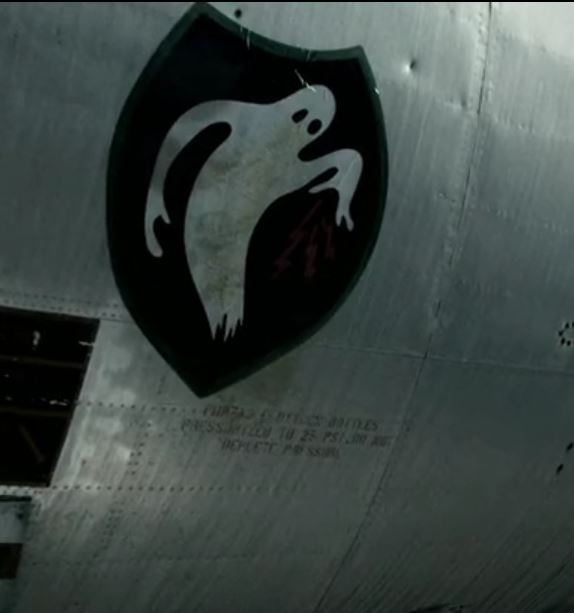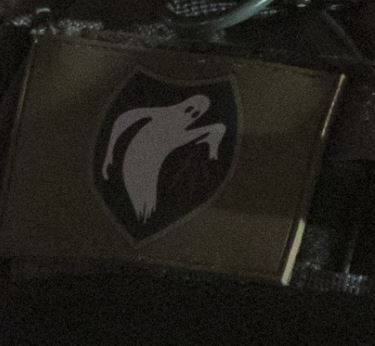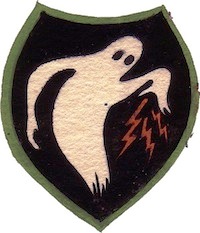It looks like you're using an Ad Blocker.
Please white-list or disable AboveTopSecret.com in your ad-blocking tool.
Thank you.
Some features of ATS will be disabled while you continue to use an ad-blocker.
share:
I will start at the beginning so that everyone can follow me. It all started with an odd death of George Michael. He died on December 25, 2016. He
died much too young from heart trouble.
coincidnetly he collected artwork from Damian Hirst.
Damien probably thought good now the artwork will go to auction because I suspect that he was in possession of some important pieces that would be needed for the grand reveal.
But not so fast.
He was close to his sister Melanie and the entire estate passed to her.That was a problem because the entire collection remained with her or at least most of it.
Believe it or not she died 3 years later to the exact day December 25th three years later. The results of her autopsy stike similarily to the virus.
She may have been infected with the virus and he had the shot.
Now the paintings could all go to auction.
I have contended form the beginning that the vaccine and the virus were made simulataneously and way before time.
They needed time to get the rest of the arrangements in order.
I am going to keep posting because I don't know what to do.
As I mentioned I play evil Sudoku for fun. And I also really like art. In fact I went to a private viewing in Venice to a modern art museum and learned a great deal about interpretation.
I just don't believe this.
coincidnetly he collected artwork from Damian Hirst.
Damien probably thought good now the artwork will go to auction because I suspect that he was in possession of some important pieces that would be needed for the grand reveal.
But not so fast.
He was close to his sister Melanie and the entire estate passed to her.That was a problem because the entire collection remained with her or at least most of it.
Believe it or not she died 3 years later to the exact day December 25th three years later. The results of her autopsy stike similarily to the virus.
She may have been infected with the virus and he had the shot.
Now the paintings could all go to auction.
I have contended form the beginning that the vaccine and the virus were made simulataneously and way before time.
They needed time to get the rest of the arrangements in order.
I am going to keep posting because I don't know what to do.
As I mentioned I play evil Sudoku for fun. And I also really like art. In fact I went to a private viewing in Venice to a modern art museum and learned a great deal about interpretation.
I just don't believe this.
I went to an auction site to see what he had coming up for sale since then and particularily this year.
For those who don't know who he is he made the diamond studded skull with the human teeth inserted.
Any artwork that I had looked at before was disturbing and remember who mentored him.
The premature deaths of those two individuals was dismissed by police as nothing here meanwhile the estate was over 50 million pounds.
some big $$$ involved.
What is astonishing is that his sister was ready to release the movie the Last Christmas.
Note the dates December 2019.
Maybe they were part of a cult but it doesn't strike me as such but who knows.
I checked Netflix which always has all kinds of shows and nope not there. they referred me to look at any other of their million other Christmas shows.
Makes me wonder about Netflix but I digress.
For those who don't know who he is he made the diamond studded skull with the human teeth inserted.
Any artwork that I had looked at before was disturbing and remember who mentored him.
The premature deaths of those two individuals was dismissed by police as nothing here meanwhile the estate was over 50 million pounds.
some big $$$ involved.
What is astonishing is that his sister was ready to release the movie the Last Christmas.
Note the dates December 2019.
Maybe they were part of a cult but it doesn't strike me as such but who knows.
I checked Netflix which always has all kinds of shows and nope not there. they referred me to look at any other of their million other Christmas shows.
Makes me wonder about Netflix but I digress.
I have never, as in never seen paintings titled with the names of chemicals, medical procedures and religious quotations.
I started to take notes and there was some really mind blowing stuff.
Cranky should I keep going?
BTW the heart issue is the major theme of the Last Christmas. Forgot to add that.
I kept looking at his art work like the Tiger shark in Formaldehyde and I thought I wonder why he chose formaldehyde. The one thing about artists is that they very deliberately select their medium. It is not an abstract it is important. It is a chemical.
I then looked at his 9000 butterflies entrapped between two white walls, fluttering and of course they died. Very disturbing Someone using the environment to kill.
I started to take notes and there was some really mind blowing stuff.
Cranky should I keep going?
BTW the heart issue is the major theme of the Last Christmas. Forgot to add that.
I kept looking at his art work like the Tiger shark in Formaldehyde and I thought I wonder why he chose formaldehyde. The one thing about artists is that they very deliberately select their medium. It is not an abstract it is important. It is a chemical.
I then looked at his 9000 butterflies entrapped between two white walls, fluttering and of course they died. Very disturbing Someone using the environment to kill.
There was so much inversion that it took me aback. Like this...The Physical Impossibility of Death in the mind of Someone Living
This was a large vitrine containing a shark.
Remember this is the artist who was supported by Saatchi that I discussed earlier.
Then I stumbled across a Mickey Mouse picture and since it is modern art it has blobs to represent the figure. But in reality it is a molecular structure.
I know. I enjoyed biology.
Now I really was curious. This is an artist using destructive chemicals, death and using symbolic molecular structures.
Rolling up my sleeves, putting my super sleuth evil sudoku hat on let's have a see here.
This was a large vitrine containing a shark.
Remember this is the artist who was supported by Saatchi that I discussed earlier.
Then I stumbled across a Mickey Mouse picture and since it is modern art it has blobs to represent the figure. But in reality it is a molecular structure.
I know. I enjoyed biology.
Now I really was curious. This is an artist using destructive chemicals, death and using symbolic molecular structures.
Rolling up my sleeves, putting my super sleuth evil sudoku hat on let's have a see here.
originally posted by: BoomGiggle
I do have a small question to postulate. Whom, may I ask, is this Resident Lurker that you mentioned. I believe I have seen Cranky speak of this entity and n the past and am curious as to who it might be.
I don't mean to take things personally. I do, however, have a bad tendency to lurk( I lurked this site for almost a decade and a half before creating an account last year)
cheers
Sorry - I don't mean to answer for anyone else, but I've always assumed that "Resident Lurker" is just Thoughtful1's significant other - reading the threads in the background, but not actually creating a username and joining... but again that is just my assumption. I really don't think she's referring to any strange ghostly users...
And to save space - I'm also with Vasa, and I don't believe it's limited to just a few of us feeling this way. Something definitely seems like it's ready to pop. Maybe not today, tomorrow, or this weekend - but it feels like something major will happen by mid August at the latest. Perhaps by next weekend (the 14th/15th)?
edit on 5-8-2021 by tallcool1 because: clarity and spelling
The list is quite comprehensive and they even have their lawyers line up.
One painting has BEANS & CHIPS. A LITTLE NOTATION AT THE TO HAD ME THINK OF LAWYERS.
SURE ENOUGH: B&C...BURGEON & CAMPBELL FIRM
GLOBAL PARTNER FOR CHEMICAL LAW AND SCIENCE LOCATED IN WASHINGTON D.C.
Sorry about the capitals I am flustered.
They have another lawyer selected.She is the wife of the baseball coach who was fired for having an extramarital affair. I have a lot of notes here so I will post it when I find it again.
Another painting has the word SAUSAGE on it. That took a moment. Drop the s and you get Au sa g which leads straight to yacht site in Australia. Yaucht finder shows some real heavy hitters. Maxverstappen, King Salman of Saudia Arabia, Victor Hwang, Mauricio Filiberti
Prince Muqrin bin Abdululaziz, Sahmeer Gehlant.
I believe that these pieces of art work represented opportunities for people to buy so that their secrets wold not be revealed, so I guess a form of bribery.
Wandering through the pictures I kept in mind the ku posts so they could guide me and it helped, very much so.
There are several of his pictures depicting the Mickey mouse in a clock with the hands positioned at different points. One cues up exactly at the 10:10 point.
There was another of 11:10 point and a couple of other ones showing some specific times. No such thing as coincidence.
One painting has BEANS & CHIPS. A LITTLE NOTATION AT THE TO HAD ME THINK OF LAWYERS.
SURE ENOUGH: B&C...BURGEON & CAMPBELL FIRM
GLOBAL PARTNER FOR CHEMICAL LAW AND SCIENCE LOCATED IN WASHINGTON D.C.
Sorry about the capitals I am flustered.
They have another lawyer selected.She is the wife of the baseball coach who was fired for having an extramarital affair. I have a lot of notes here so I will post it when I find it again.
Another painting has the word SAUSAGE on it. That took a moment. Drop the s and you get Au sa g which leads straight to yacht site in Australia. Yaucht finder shows some real heavy hitters. Maxverstappen, King Salman of Saudia Arabia, Victor Hwang, Mauricio Filiberti
Prince Muqrin bin Abdululaziz, Sahmeer Gehlant.
I believe that these pieces of art work represented opportunities for people to buy so that their secrets wold not be revealed, so I guess a form of bribery.
Wandering through the pictures I kept in mind the ku posts so they could guide me and it helped, very much so.
There are several of his pictures depicting the Mickey mouse in a clock with the hands positioned at different points. One cues up exactly at the 10:10 point.
There was another of 11:10 point and a couple of other ones showing some specific times. No such thing as coincidence.
originally posted by: Thoughtful1
a reply to: crankyoldman
Cranky I need to know what to do.
Look for connections. Art is a money laundering asset primarily in reverse. Meaning the guy who gets the art is the winner not the guy who gets the fiat currency.
A quick look at his art doesn't strike me as much.
But.
Damien Hirst’s Artworks May Leak Formaldehyde Gas
That’s the conclusion of a new study published in Analytical Methods by scientists who used formaldehyde fume-sensing devices to monitor Hirst’s artwork during a show at the Tate Modern in London. If it seems like a stretch to conduct peer-reviewed research just to bring down a famous artist, don’t worry—the study was primarily devoted to showing proof of concept of a miniature, bracelet-style sensor that monitors formaldehyde levels in indoor air.
But the results point a finger at Hirst nonetheless: The study concludes that multiple Hirst works, including sheep, sausages and a cow immersed in the substance, leaked formaldehyde gas at levels up to five parts per million. To put that in context, the average amount of airborne formaldehyde in an American home is 11 to 20 parts per billion, and the permissible amount of formaldehyde in the air in American workplaces is 0.75 parts per million. When it is breathed in, formaldehyde can cause respiratory distress and long-term exposure to its fumes is associated with cancer.
The study’s authors warned of another danger—the risk formaldehyde gas presents to artwork. Since formaldehyde affects both proteins and amino acids, they explain, “such a reaction, besides being harmful to the proteins in our body fluids, can be devastating…in processes of restoration of artwork.”
Again, we only have one illness now. The Rona. All over respiratory ailments are gone, there is only The Rona.
GD nearly everything everywhere will give people trouble breathing, especially if they have a million other problems AND breathe normally like dying mice.
Some very interesting titled artwork
WellcomeZovirax 200. The name Wellcome and just happens to be connected to the WHO. I didn't check on this drug but I am sure it is a dilly.
No one names pictures like this.
Then there was a picture of what looks to me like water with the name H^-9.
Water is H2O. I put it together and it looks like this H20H6-9. I goog it and up pops, I kid you not, "Timely Prediction of World Health Killer Virus"
Sylvia's End of Days Prediction.
I took a little peak but I was pressed to learn as much as possible. The title of the book is "Secret's + Mysteries of the World" It deals with issues like CRYSTAL SKULLS, which our arch rival Damian produced alongside his bejeweled skeleton head.
He apparently got his inspiration from the Aztecs who used to do this as well. Also she delves into issues like Atlantis and people living 700-900 years long.
I suppose what really tips this cart over is paintings named PHARMACY. Not very subtle.
I guess he figured his audience would know which ones to bid on.
It is worth looking at the order of the paintings because it does generate a feeling. This was not randomly placed, because there is always a reason, as in always.
I did read a detailed art critic blog on what he thought and felt when he saw the diamond studded skull and his comments had me thinking. The placement and angle was really important so we can definately assume that this is a narrative that we are reading.
WellcomeZovirax 200. The name Wellcome and just happens to be connected to the WHO. I didn't check on this drug but I am sure it is a dilly.
No one names pictures like this.
Then there was a picture of what looks to me like water with the name H^-9.
Water is H2O. I put it together and it looks like this H20H6-9. I goog it and up pops, I kid you not, "Timely Prediction of World Health Killer Virus"
Sylvia's End of Days Prediction.
I took a little peak but I was pressed to learn as much as possible. The title of the book is "Secret's + Mysteries of the World" It deals with issues like CRYSTAL SKULLS, which our arch rival Damian produced alongside his bejeweled skeleton head.
He apparently got his inspiration from the Aztecs who used to do this as well. Also she delves into issues like Atlantis and people living 700-900 years long.
I suppose what really tips this cart over is paintings named PHARMACY. Not very subtle.
I guess he figured his audience would know which ones to bid on.
It is worth looking at the order of the paintings because it does generate a feeling. This was not randomly placed, because there is always a reason, as in always.
I did read a detailed art critic blog on what he thought and felt when he saw the diamond studded skull and his comments had me thinking. The placement and angle was really important so we can definately assume that this is a narrative that we are reading.
a reply to: crankyoldman
Please follow that angle. I have spent so much time on this and there is so much to go over.
Thank you for doing your part.
Please follow that angle. I have spent so much time on this and there is so much to go over.
Thank you for doing your part.
People really, really, really, really....... really need to stop seeing the courts as their friend.
Mumbles Something

Let's all show how Joe is a demented LIAR and his job is not "by the people for the people" but he is a stooge for the higher order. Anyone still confused?


Let's all show how Joe is a demented LIAR and his job is not "by the people for the people" but he is a stooge for the higher order. Anyone still confused?

I also went back to see what little Damian was up to during this covid fun time we have been having. Reminds me of the Omen.
Hold on...What?
He started to make art and prints which he sold and donated all of the profits to the NHS and the Felix Project. This is a psychopath of the highest order!
He even made some limited edition prints for Save The Children"s Education Program in Italy.
I need to look into his collaborator FONDAZIONE PRADA from Milan. Anyone connected to him is not on the good guys side.
The Butterfly Rainbow and the Butterfly Heart, his two charitable contributions, steaming- just the audacity- have become the epitome of the RESISTANCE AND RESILIENCE to the COVID -19 pandemic.
Hold on...What?
He started to make art and prints which he sold and donated all of the profits to the NHS and the Felix Project. This is a psychopath of the highest order!
He even made some limited edition prints for Save The Children"s Education Program in Italy.
I need to look into his collaborator FONDAZIONE PRADA from Milan. Anyone connected to him is not on the good guys side.
The Butterfly Rainbow and the Butterfly Heart, his two charitable contributions, steaming- just the audacity- have become the epitome of the RESISTANCE AND RESILIENCE to the COVID -19 pandemic.
The one picture I am really, as in really interested in is the one titled THE CURE [FIRE RED/SUN YELLOW/FIRE ORANGE]
I have a feeling it is a "cure " for us. I wonder if that is some terminology about missles.
Then I screeched to a halt at the picture "The Last Supper". It is a world picture in blood red of sites around the world equipped with weapons and the number. The one named Jesus Christ...We should be worried. Looks like 100 nuclear missles are located on the South East coast of Africa.
I had noticed a number of religious references to pictures which I thought was really odd for someone so into death.
I hope there is some military intelligence here that will look into this.
The sale date was December 2020. Reflecting on his past behavior he seems to look at Christmas as a festive event...but not for us. As you said Cranky we need to know who bought that painting!
I wasn't able to get it large enough, to see all of the details but they are there. Jesus Christ is located off the east side of Africa.
I have a feeling it is a "cure " for us. I wonder if that is some terminology about missles.
Then I screeched to a halt at the picture "The Last Supper". It is a world picture in blood red of sites around the world equipped with weapons and the number. The one named Jesus Christ...We should be worried. Looks like 100 nuclear missles are located on the South East coast of Africa.
I had noticed a number of religious references to pictures which I thought was really odd for someone so into death.
I hope there is some military intelligence here that will look into this.
The sale date was December 2020. Reflecting on his past behavior he seems to look at Christmas as a festive event...but not for us. As you said Cranky we need to know who bought that painting!
I wasn't able to get it large enough, to see all of the details but they are there. Jesus Christ is located off the east side of Africa.
I am going to keep going so it all gets out there.
His religious titled paintings in Latin just don't cut it for me because well he sees himself as the opposite. He fully expects us to be making these prayers while he prays to the non god.
One is titled Exaudi Domine..."Hear my prayer
Spare us. o lord
The goog translater has just below Exaudi domaine patre...hear o great satan.
They are part of his Psalm Print
Another one is Domine, ne in furore which translated is "Oh Lord be not in my anger. Interesting, is he threatening God?
And another one Attendite, Popule. It is too long to place here but basically it is about people losing God's favor because of their behavior. It is where he keeps feeding everyone providing water and finally has had it and unleashed grasshoppers, frogs, hail, fruit trees destroyed by frost and other punishments.
Makes me wonder if he views himself as the agent of death. In some way distorting that he is God's instrument.
His religious titled paintings in Latin just don't cut it for me because well he sees himself as the opposite. He fully expects us to be making these prayers while he prays to the non god.
One is titled Exaudi Domine..."Hear my prayer
Spare us. o lord
The goog translater has just below Exaudi domaine patre...hear o great satan.
They are part of his Psalm Print
Another one is Domine, ne in furore which translated is "Oh Lord be not in my anger. Interesting, is he threatening God?
And another one Attendite, Popule. It is too long to place here but basically it is about people losing God's favor because of their behavior. It is where he keeps feeding everyone providing water and finally has had it and unleashed grasshoppers, frogs, hail, fruit trees destroyed by frost and other punishments.
Makes me wonder if he views himself as the agent of death. In some way distorting that he is God's instrument.
a reply to: F2d5thCavv2
My high curiosity and a deep desire for Truth is solid. Especially if it goes against mainstream thought process.
Wonder how many ppl have tried putting their Avatar Names into gematrix.org
My high curiosity and a deep desire for Truth is solid. Especially if it goes against mainstream thought process.
Wonder how many ppl have tried putting their Avatar Names into gematrix.org
There is one painting that has me really, really wondering. It is an x-ray called "SELF PORTRAIT". Front and side view perspective.
Examining the side view the chin is very, very elongated. As in abnormally so.
Wandering through Bled Castle and all the oddities around that, we come across the> HADSBURG FAMILY. This x-ray is the reveal because the family had a genetic defect due to inbreeding. It came through one of the mothers and affected the size of the jaw which kept getting bigger and more distorted over time and also affected the lip.
Eventually this inbreeding led to most of the male line disappearing. Imagine Austria actually had a Hadsburg Law which forbid them too live or own land in Austria. All of there rights to land through out the empire were seized.
This is the rotten center.
The arrogance of placing that x-ray up as a self portrait. The wizard behind the curtain.
Examining the side view the chin is very, very elongated. As in abnormally so.
Wandering through Bled Castle and all the oddities around that, we come across the> HADSBURG FAMILY. This x-ray is the reveal because the family had a genetic defect due to inbreeding. It came through one of the mothers and affected the size of the jaw which kept getting bigger and more distorted over time and also affected the lip.
Eventually this inbreeding led to most of the male line disappearing. Imagine Austria actually had a Hadsburg Law which forbid them too live or own land in Austria. All of there rights to land through out the empire were seized.
This is the rotten center.
The arrogance of placing that x-ray up as a self portrait. The wizard behind the curtain.
If you're looking for a high octane adrenaline fueled action film, Michael Bay style checkout 6
Underground. Meet a new kind of action hero. Six untraceable agents, totally off the grid. They've buried their pasts so they can change the
future. Pure action right from the start.

Less than 3 minutes in and this Army patch caught my eye.
ScreenCaps from the movie:


Hollywood removed the lightning bolts.
The Ghost Army was a United States Army tactical deception unit during World War II officially known as the 23rd Headquarters Special Troops. Their story was kept secret for more than 40 years after the war, until it was declassified in 1996. The unit was the subject of a PBS documentary The Ghost Army in 2013. Ghost Army website
German soldiers referred to them as the "Phantom Army," because one moment they were in one place, and the next, they were attacking their flanks or from the rear. They also used sonic deception. Their last "disappearing act" was to vanish from history.

The 23rd Headquarters Special Troops (World War II)
Ghost Army: The Inflatable Tanks That Fooled Hitler
Ghost Army Legacy Project
The Ghost Army Trailer - the original true LARPs of WWII.

Less than 3 minutes in and this Army patch caught my eye.
ScreenCaps from the movie:


Hollywood removed the lightning bolts.
The Ghost Army was a United States Army tactical deception unit during World War II officially known as the 23rd Headquarters Special Troops. Their story was kept secret for more than 40 years after the war, until it was declassified in 1996. The unit was the subject of a PBS documentary The Ghost Army in 2013. Ghost Army website
German soldiers referred to them as the "Phantom Army," because one moment they were in one place, and the next, they were attacking their flanks or from the rear. They also used sonic deception. Their last "disappearing act" was to vanish from history.

The 23rd Headquarters Special Troops (World War II)
Ghost Army: The Inflatable Tanks That Fooled Hitler
These props -- "advanced technology" as advanced technology -- were amazingly effective, doing what all good theater props will: setting a believable scene. The Ghost Army, some 1,100 men in all, ended up staging more than twenty battlefield deceptions between 1944 and 1945, starting in Normandy two weeks after D-Day and ending in the Rhine River Valley. Many of those performances -- "illusions," the men appropriately preferred to call them -- took place within a few hundred yards of the front lines.
Ghost Army Legacy Project
The Ghost Army Trailer - the original true LARPs of WWII.
I found the name of the other lawyer that they have selected. I am just going through the check list.
CANNIZARO, ALLISON- She is a consumer defense lawyer but interestingly she has successfully defended banks.
We might have a bank connection here.
A number of his painting just outright show shots, pharmaceutical words, labs, equipment. It leaves nothing to the imagination.
I messed around with some of the titles to give them a little nudge and I looked up a lot because the names are unfamiliar.
NESSUS painting leads back to Security Solutions Advanced Vulnerability Scanner. It is proprietary it is by Tenable.
I am out of my league and comfort zone on this so anyone please feel free to weigh in.
As I said I am putting out leads with some meat on the bones.
Another name for us. JOHNATHON ROTHBERG, a serial entrepreneur - First impressions are that everything is just bad around this but I tried to approach with an open mind. He was awarded a National Medal of Technology & Innovation by Obama, so he is smart. I looked up what he is up to. He was awarded the medal for pioneering and commercializing DNA sequencing technologies so that researches can access the genomic information quickly. I am not too keen on this but it is the BUTTERFLY NETWORK.
Seems like our Damien has been using lots of butterflys in his charitable works. There must be something in his technologies and I did seen one about detecting tumours in the body. Maybe this is a symptom of the vaccine yet to really show up.
CANNIZARO, ALLISON- She is a consumer defense lawyer but interestingly she has successfully defended banks.
We might have a bank connection here.
A number of his painting just outright show shots, pharmaceutical words, labs, equipment. It leaves nothing to the imagination.
I messed around with some of the titles to give them a little nudge and I looked up a lot because the names are unfamiliar.
NESSUS painting leads back to Security Solutions Advanced Vulnerability Scanner. It is proprietary it is by Tenable.
I am out of my league and comfort zone on this so anyone please feel free to weigh in.
As I said I am putting out leads with some meat on the bones.
Another name for us. JOHNATHON ROTHBERG, a serial entrepreneur - First impressions are that everything is just bad around this but I tried to approach with an open mind. He was awarded a National Medal of Technology & Innovation by Obama, so he is smart. I looked up what he is up to. He was awarded the medal for pioneering and commercializing DNA sequencing technologies so that researches can access the genomic information quickly. I am not too keen on this but it is the BUTTERFLY NETWORK.
Seems like our Damien has been using lots of butterflys in his charitable works. There must be something in his technologies and I did seen one about detecting tumours in the body. Maybe this is a symptom of the vaccine yet to really show up.
new topics
-
Steering the Titantic from the Drydock.
US Political Madness: 1 hours ago -
Paramilitary Leaks - John Williams
Whistle Blowers and Leaked Documents: 10 hours ago -
Some sausage, some chicken, some sauce, some onions and some garlic...and some peppers!
Food and Cooking: 11 hours ago
top topics
-
House Passes Laken Riley Act
Mainstream News: 12 hours ago, 23 flags -
What Comes After January 20th
Mainstream News: 15 hours ago, 18 flags -
Hearing more ambulances lately
Medical Issues & Conspiracies: 12 hours ago, 7 flags -
Los Angeles brush fires latest: 2 blazes threaten structures, prompt evacuations
Mainstream News: 12 hours ago, 7 flags -
Let's Buy Greenland
General Chit Chat: 17 hours ago, 6 flags -
Those stupid GRAVITE commercials
Rant: 16 hours ago, 5 flags -
Paramilitary Leaks - John Williams
Whistle Blowers and Leaked Documents: 10 hours ago, 5 flags -
The more I think about it
General Chit Chat: 13 hours ago, 4 flags -
Canada as a state .. how would it work?
General Chit Chat: 15 hours ago, 4 flags -
Some sausage, some chicken, some sauce, some onions and some garlic...and some peppers!
Food and Cooking: 11 hours ago, 3 flags
active topics
-
Meta Llama local AI system is scary good
Science & Technology • 49 • : glend -
Steering the Titantic from the Drydock.
US Political Madness • 1 • : andy06shake -
Canada as a state .. how would it work?
General Chit Chat • 17 • : FlyersFan -
-@TH3WH17ERABB17- -Q- ---TIME TO SHOW THE WORLD--- -Part- --44--
Dissecting Disinformation • 3968 • : AianawaQ1320 -
Gravitic Propulsion--What IF the US and China Really Have it?
General Conspiracies • 34 • : Lazy88 -
Let's Buy Greenland
General Chit Chat • 16 • : Freeborn -
Post A Funny (T&C Friendly) Pic Part IV: The LOL awakens!
General Chit Chat • 8000 • : KrustyKrab -
Los Angeles brush fires latest: 2 blazes threaten structures, prompt evacuations
Mainstream News • 13 • : BeyondKnowledge3 -
House Passes Laken Riley Act
Mainstream News • 16 • : KrustyKrab -
Planned Civil War In Britain May Be Triggered Soon
Social Issues and Civil Unrest • 16 • : Freeborn
